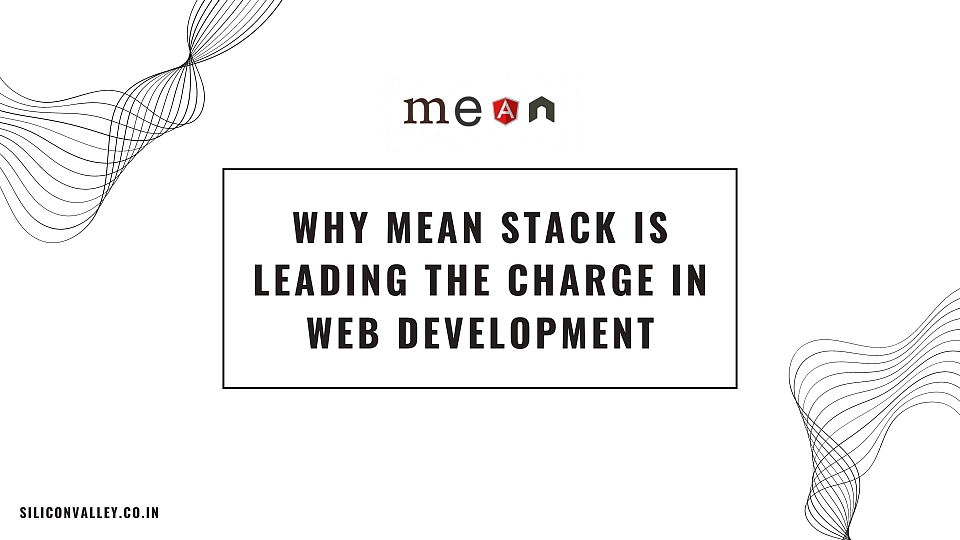Why MEAN Stack is Leading the Charge In Web Development
In the ever-evolving world of web development, staying updated with the latest technologies and trends is crucial. One such technology stack that has gained immense popularity is the MEAN stack. Comprising MongoDB, Express.js, Angular, and Node.js, the MEAN stack offers a comprehensive solution for building dynamic and scalable web applications. This blog post delves into why the MEAN stack is leading the charge in web development and what makes it a preferred choice for developers and businesses alike.
Evolution of the MEAN Stack
The MEAN stack has come a long way since its inception. Initially, developers faced challenges integrating different technologies to build full-stack applications. The introduction of the MEAN stack simplified this process by offering a unified solution where JavaScript is used across the entire stack. MongoDB provides a flexible NoSQL database, Express.js simplifies server-side development, Angular offers robust front-end capabilities, and Node.js ensures efficient back-end processing.
Benefits of Using MEAN Stack
One of the primary advantages of the MEAN stack is the use of full-stack JavaScript, which streamlines the development process and reduces the learning curve for developers. High performance and scalability are achieved through non-blocking architecture and efficient data handling. The MEAN stack enables rapid development and prototyping, making it an ideal choice for startups and projects with tight deadlines. Additionally, it is cost-effective, as a single language is used for both client-side and server-side development, reducing the need for multiple specialists.
Recent Trends and Updates
The MEAN stack continuously evolves, with each component receiving regular updates. Angular 13, for instance, has introduced significant improvements in performance, tooling, and developer experience. MongoDB's latest versions offer enhanced security and performance features. Node.js updates bring better performance and support for modern JavaScript features, while Express.js continues to streamline development with its minimalist approach.
MEAN Stack in Microservices Architecture
Microservices architecture has become a popular approach for building scalable and maintainable applications. The MEAN stack fits perfectly into this paradigm, as its modular components can be independently developed, deployed, and scaled. Many MEAN Stack Development Companies leverage this architecture to build robust applications, ensuring high availability and fault tolerance. Successful implementations, such as those by Netflix and Uber, showcase the potential of using MEAN stack in microservices.
MEAN Stack and Serverless Architecture
Serverless architecture is gaining traction due to its cost-efficiency and ease of deployment. MEAN stack can be effectively integrated with serverless frameworks, such as AWS Lambda, to build scalable and cost-effective applications. This integration allows developers to focus on writing code without worrying about infrastructure management, leading to faster development cycles and reduced operational overhead.
Security Enhancements
Security is a critical aspect of web development. The MEAN stack offers various security features and best practices to safeguard applications. MongoDB provides robust data encryption and access control mechanisms. Express.js supports secure cookies and session management, while Angular includes built-in features for preventing cross-site scripting (XSS) and cross-site request forgery (CSRF) attacks. Node.js enables secure communication through HTTPS and integrates with various authentication libraries.
Performance Optimization
Optimizing performance is essential for delivering a seamless user experience. Developers can utilize various tools and techniques to enhance the performance of MEAN stack applications. Caching strategies, such as Redis and Memcached, can be employed to reduce database load. Tools like PM2 can monitor and manage Node.js applications for optimal performance. Angular's Ahead-of-Time (AOT) compilation and lazy loading improve front-end performance, ensuring faster load times and smoother interactions.
Real-World Applications
The MEAN stack has been successfully adopted by numerous companies and projects across different industries. From e-commerce platforms to social media applications, the versatility of the MEAN stack makes it suitable for various use cases. Interviews with developers highlight the ease of development and the powerful capabilities of the stack. Companies offering MEAN Stack Development Services emphasize the stack's ability to deliver high-quality, scalable solutions.
Future Prospects
The future of MEAN stack development looks promising, with ongoing advancements and innovations. Upcoming features and improvements in MongoDB, Express.js, Angular, and Node.js will continue to enhance the stack's capabilities. As web development trends evolve, the MEAN stack is poised to remain a key player, driving innovation and efficiency in the industry.
Conclusion
The MEAN stack stands out as a powerful and efficient solution for modern web development. Its unified use of JavaScript, high performance, scalability, and cost-effectiveness make it a preferred choice for developers and businesses. Staying updated with the latest trends and advancements in the MEAN stack ensures that developers can leverage its full potential to build dynamic and robust web applications.
We invite you to share your thoughts and experiences with the MEAN
stack in the comments below. If you're looking to explore the
potential of MEAN stack web development for your projects, consider
reaching out to a professional MEAN Stack Development Company.
Subscribe to our blog for more updates and insights on the latest
trends in web development.










